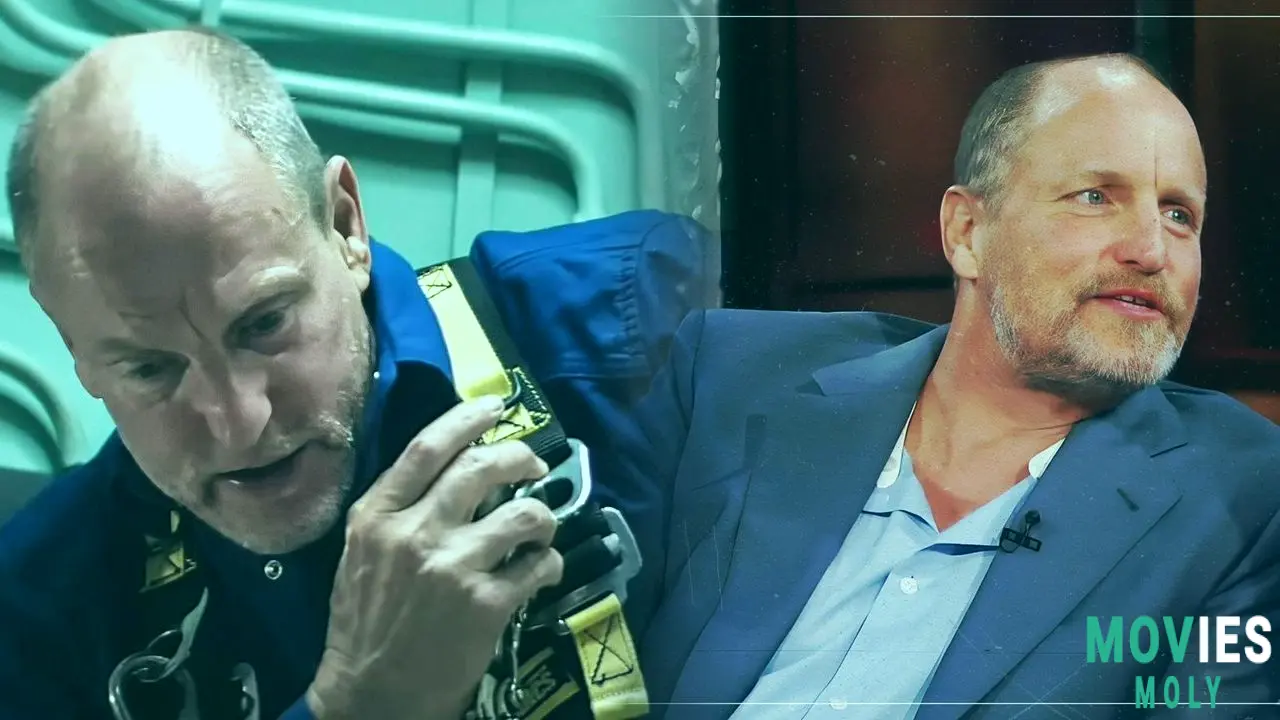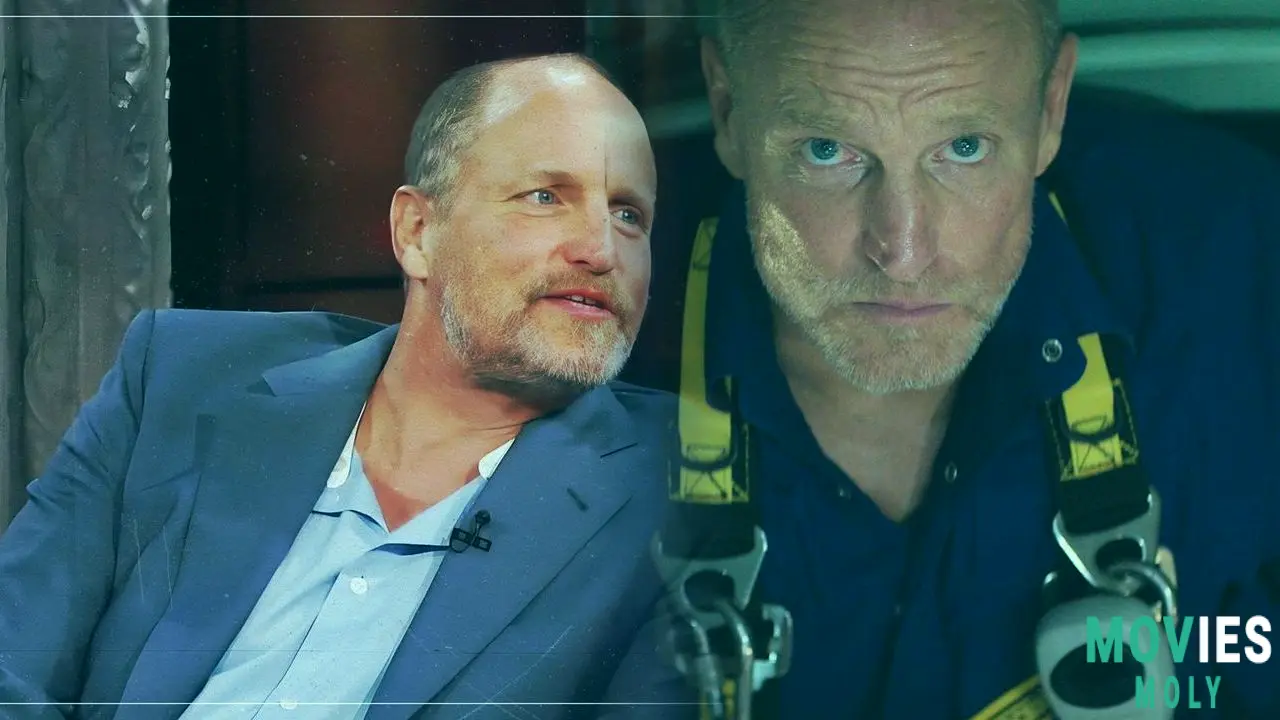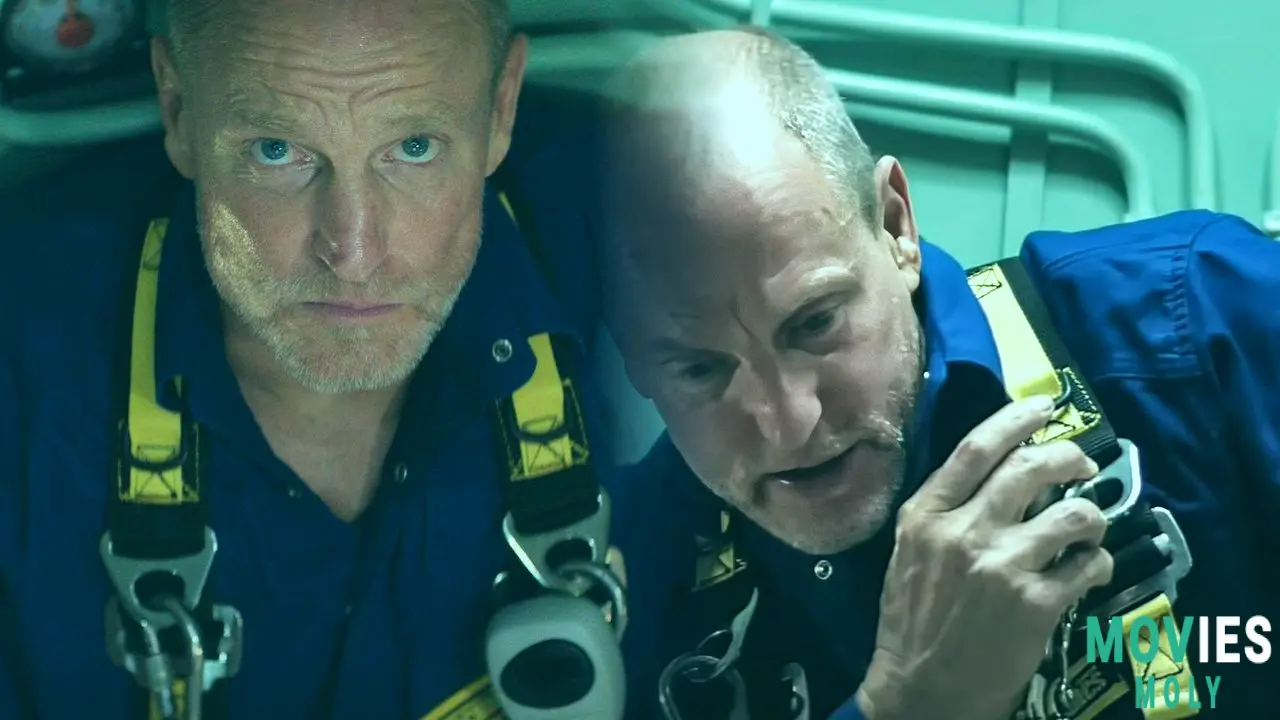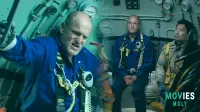Last Breath, now streaming on Peacock, isn’t just another blue-collar, based-on-a-true-story (BOATS) thriller—it’s a deep dive into human grit, brotherhood, and survival against all odds. And anchoring this underwater odyssey is none other than Woody Harrelson, who once again proves he can carry a film not with fireworks, but with the steady weight of lived experience.
Woody Harrelson’s Underwater Grit Gives Last Breath Its Emotional CoreHarrelson stars as Duncan Allcock, a seasoned saturation diver on his final rotation beneath the tempestuous North Sea. Alongside Finn Cole’s eager Chris Lemons and Simu Liu’s stoic Dave Yuasa, Harrelson forms a trio of men trapped—not just 300 feet below the surface—but in a spiraling nightmare of mechanical failure and human determination. Directed by Alex Parkinson, Last Breath dramatizes a 2012 diving accident with such grounded intensity that it feels like a myth in the making.
What sets Harrelson’s performance apart isn’t explosive monologues or dramatic breakdowns (though the situation certainly calls for them). It’s his quiet authority. Duncan is an old hand pushed to the edge, not just by the sea, but by the looming shadow of forced retirement. He doesn’t curse the abyss—he works in it. And Harrelson embodies that with the kind of nuance only a veteran actor can deliver. His worn cable-knit sweater may be free of holes, but it’s soaked with unspoken stories.
Last Breath Isn’t Just a Thriller — It’s a Submerged Study of Menacing Isolation

Based on real events and adapted from Parkinson’s own 2019 documentary, Last Breath blurs the line between fact and cinematic tension. The film follows Lemons as he becomes separated from the team, stranded on the seabed with a broken umbilical and dwindling oxygen. What follows is a desperate rescue mission filled with technical wizardry, human error, and sheer willpower. And through it all, Duncan and Dave are fighting not only to save a life, but to hold onto their own.
The term “saturation diving” may sound like sci-fi, but in the hands of Last Breath, it becomes a claustrophobic reality. These men live in pressurized chambers like underwater astronauts, where one wrong move means instant death. The filmmakers eschewed CGI for practical effects, shooting underwater scenes in saltwater tanks. The result? A visceral sense of dread you can’t fake. When Chris lights his way to the top of a manifold with an underwater flare, the red glow feels less like hope and more like a descent into hell.
Harrelson’s Role May Be Underserved by the Script, But Not by His Presence

Critics have noted that the screenplay doesn’t give Harrelson’s Duncan as much depth as the story deserves. Decider even points out that Mark Bonnar, playing the dive supervisor, does more with his silent stress than Harrelson does with some of his clunkier lines. But that’s more a testament to Harrelson’s skill than a knock on his performance. Even when the material is underwritten, Harrelson grounds it. He turns Duncan into a relatable human being—someone you trust to have your back when you're 300 feet underwater and one misstep away from eternity.
And let's be real: Harrelson’s presence in a sub-sub-sub-subgenre (documentary-turned-fiction underwater survival) like this adds a layer of credibility. He’s the kind of actor who can make you believe in a cable-knit-clad hero without needing him to shout through a storm. He's not just filling a role; he's embodying a profession that rarely gets this kind of honest representation on screen.
Last Breath Is the Kind of Film That Earns Its Audience Under the Surface
Moviejawn calls Last Breath “well-made, thrilling, and with a few earned moments of pathos.” That’s about as on-the-nose as it gets for a film that’s more about atmosphere and authenticity than flashy storytelling. This isn’t Deepwater Horizon with explosions—this is the emotional equivalent, told through the slow, suffocating tick of an oxygen timer and the desperate hope in a voice crackling through an underwater radio.
And Harrelson? He’s right in the middle of it, not as a larger-than-life hero, but as a man who’s been to the bottom more times than he can count, both literally and figuratively. Duncan’s final rotation isn’t just about one last job—it’s about leaving the only world he knows in one piece. Harrelson captures that without a single line of exposition. It's in his gaze, his posture, and the way he lets the silence speak when the ocean roars just a bit too loud.
Woody Harrelson Gives Us a Ground-Level Hero for an Underwater Odyssey
In a genre obsessed with spectacle, Harrelson delivers something more powerful: realism. Last Breath may not dive into the psychological aftermath as deeply as it could (and as the real events surely warrant), but it doesn’t have to. With performances like this, and filmmaking this dedicated to truth, it’s enough to just hold your breath and watch.
Woody Harrelson doesn’t save the day with a punch. He saves it with presence. And that makes all the difference.





